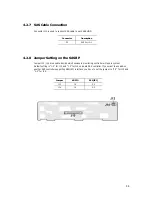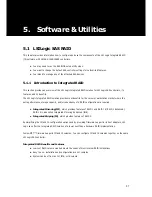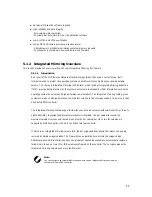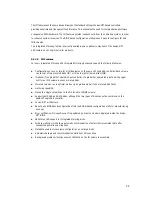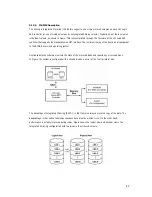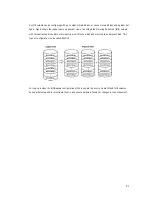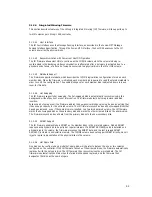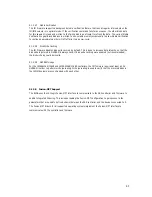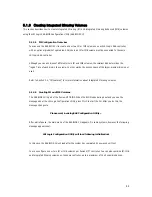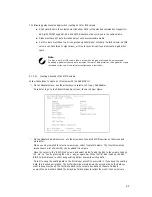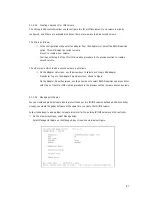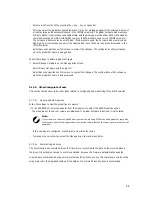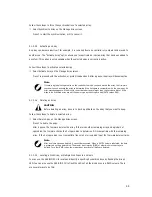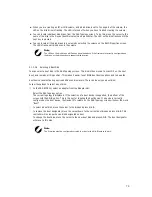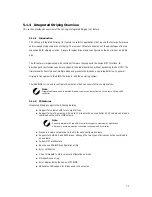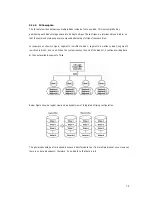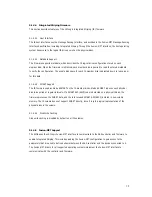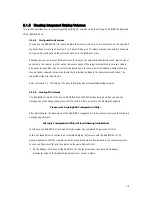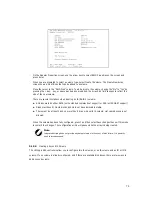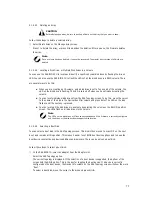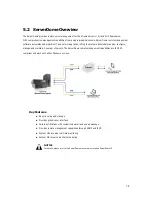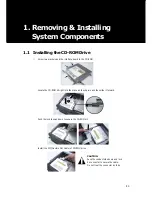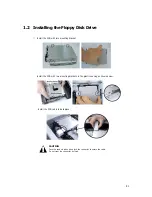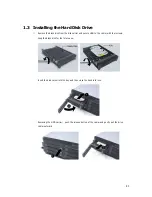
68
③
Select a disk from the list by pressing the + key, . key, or space bar.
④
After you select the global hot spare disk, press C. An error message appears if the selected disk is not
at least as large as the smallest disk used in the IM/IME volume(s). The global hot spare disk must have
512-byte blocks, it cannot have removable media, and the disk type must be either SATA with extended
command set support or SAS with SMART support. If SATA disks are used for the IM/IME volume(s),
the hot spare disk must also be a SATA disk. If SAS disks are used, the hot spare disk must also be a
SAS disk. An error message appears if the selected disk is not the same type as the disks used in the
IM/IME volumes.
⑤
Select Save changes then exit this menu to commit the changes. The configuration utility will pause
while the global hot spare is being added.
Follow these steps to delete a global hot spare:
①
Select Manage Hot Spare on the Manage Array screen.
②
Select Delete Hot Spare and then press C.
③
Select Save changes then exit this menu to commit the changes. The configuration utility will pause
while the global hot spare is being removed.
5.1.3.3 Other Configuration Tasks
This section explains how to do other tasks related to configuring and maintaining IM and IME volumes.
5.1.3.3.1 Viewing Volume Properties
Follow these steps to view the properties of volumes:
①
In the SAS BIOS CU, select an adapter from the Adapter List. Select the RAID Properties option.
The properties of the current volume are displayed. If a global hot spare is defined, it is also listed.
Note
If you create one volume using SAS disks, another volume using SATA disks, and a global hot spare disk,
the hot spare disk will only appear when you view the volume that has the same type of disks as the hot
spare disk.
②
If two volumes are configured, press Alt+N to view the other array.
③
To manage the current array, select the Manage Array item and press Enter.
5.1.3.3.2 Synchronizing an Array
The Synchronize Array command forces the firmware to resynchronize the data on the mirrored disks is
the array. It is seldom necessary to use this command, because the firmware automatically keeps the
mirrored data synchronized during normal system operation. When you use this command, one disk of the
array is placed in the Degraded state until the data on the mirrored disks has been resynchronized.
Summary of Contents for XtremeServer 2544
Page 1: ......
Page 12: ...9 1 3 Mainboard Layout 1 3 1 Block Diagram ...
Page 26: ...23 ...
Page 43: ...40 4 1 6 PCI PnP Menu PCI PnP Menu 1 PCI PnP Menu 2 ...
Page 46: ...43 4 1 8 Security Menu Security Menu 1 Change Supervisor Security Menu 2 Change User ...
Page 48: ...45 4 1 9 Chipset Configuration Menu 4 1 9 1 NorthBridge Chipset Configuration Submenu ...



